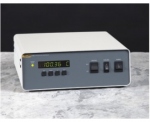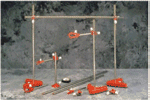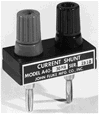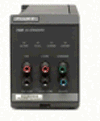
Keranjang
agen indonesia Fluke 9500B Oscilloscope Calibrator
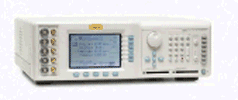
| Kategori | FLUKE |
| Di lihat | 1653 kali |
| Harga | Rp (hubungi cs) |
Detail Produk agen indonesia Fluke 9500B Oscilloscope Calibrator
 Oscilloscope calibration can be complex, time consuming and expensive. A significant amount of skilled operator interaction and interpretation is often required to complete the job, and today’ s multi-channel instruments frequently mean that a great deal of lead switching is required. Even automated systems require significant manual intervention to complete elements of the most simple calibration procedures. Worse still, switching systems or multiplexers used to enable a degree of automation often contribute more errors and aberrations than the instrument being calibrated.
Oscilloscope calibration can be complex, time consuming and expensive. A significant amount of skilled operator interaction and interpretation is often required to complete the job, and today’ s multi-channel instruments frequently mean that a great deal of lead switching is required. Even automated systems require significant manual intervention to complete elements of the most simple calibration procedures. Worse still, switching systems or multiplexers used to enable a degree of automation often contribute more errors and aberrations than the instrument being calibrated.
The 9500B Oscilloscope Calibrator features
Automating oscilloscope calibration is possibly one of the biggest productivity enhancements that can be realised in many calibration labs. Performed manually, this work requires skilled operators to spend a substantial amount of time performing what are essentially repetitive tasks. Semi, or partial automation solutions apparently address this issue and free skilled technicians to perform more valuable tasks. However, in practice, these partial solutions present their own problems.
Over the last decade, the oscilloscope of choice has migrated from a two-channel instrument to a more complex four-channel device. When calibrating these instruments, it is necessary to move the calibrating signal from channel to channel as the procedure progresses. This can be achieved by physically moving cables, though this requires operator intervention. In high performance instruments, this may introduce additional measurement uncertainties as cables and connectors are handled. An alternative is to introduce a switching matrix to route signals, though this may result in problems with signal reflections, poor contacts and path differences that materially impact calibration uncertainties.
Active Heads and full automation
The Fluke Calibration 9500B addresses these issues, and provides true, full automation through the use of its unique Active Heads. With the 9500B, all the signals required to fully calibrate the oscilloscope are generated in detachable heads, remote from the calibrator mainframe. The heads are connected directly to the oscilloscope input without the need for additional cables. All control and switching of waveforms are performed under the control of the mainframe, yet within the head itself – typically only a matter of millimeters away from the oscilloscope input and amplifiers. With each 9500B mainframe able to control up to five heads, all the signals required to calibrate a 4-channel oscilloscope with an external trigger can be supplied, controlled and switched without operator intervention or the need for external switching.

